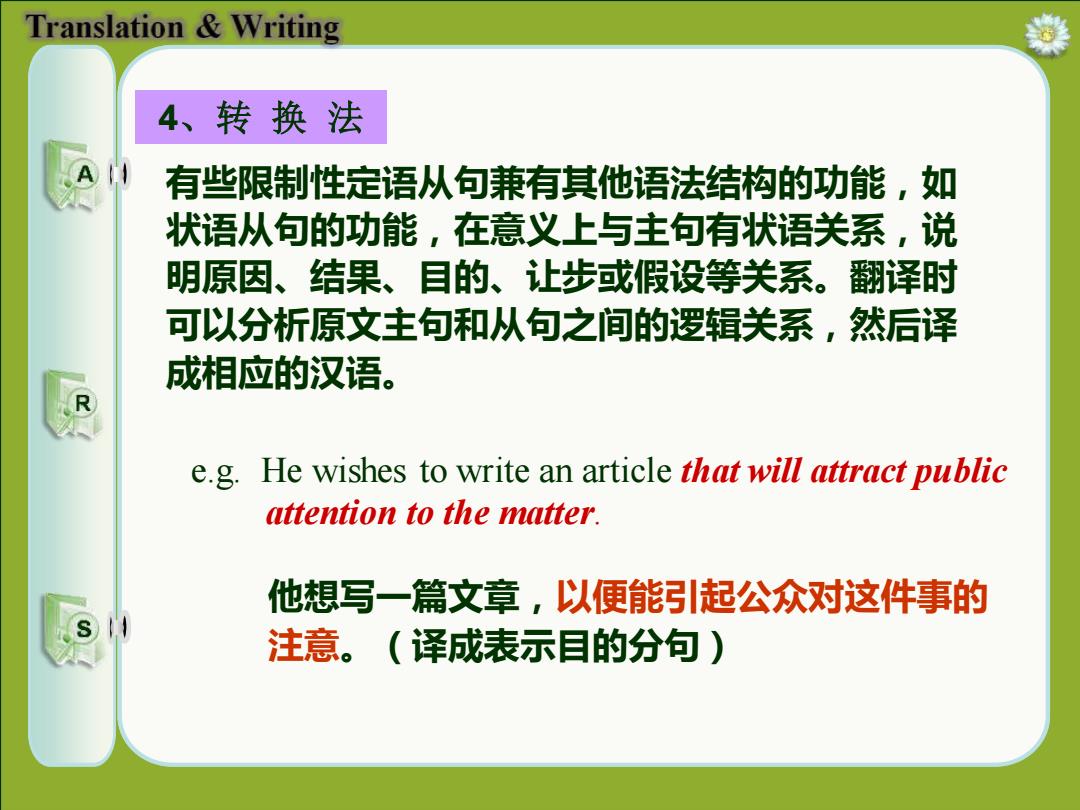
Translation Writing 3、融合法 由于限制性定语从句与主句关系紧密,有时需要把 原句中的主句和定语从句融合在一起,译成一个完整 的句子。 1)There was nothing that interested him at the show. 展览会上没有什么东西使他感兴趣。 2)There are social,emotional,and moral considerations in our future that cannot be foreseen 有一些未来的社会、情感、道德等方面要考虑的因 素是无法预见的
3、融 合 法 由于限制性定语从句与主句关系紧密,有时需要把 原句中的主句和定语从句融合在一起,译成一个完整 的句子。 1) There was nothing that interested him at the show. 展览会上没有什么东西使他感兴趣。 2) There are social, emotional, and moral considerations in our future that cannot be foreseen. 有一些未来的社会、情感、道德等方面要考虑的因 素是无法预见的

Translation Writing 4、转换法 有些限制性定语从句兼有其他语法结构的功能,如 状语从句的功能,在意义上与主句有状语关系,说 明原因、结果、目的、让步或假设等关系。翻译时 可以分析原文主句和从句之间的逻辑关系,然后译 成相应的汉语。 e.g.He wishes to write an article that will attract public attention to the matter. 他想写一篇文章,以便能引起公众对这件事的 注意。(译成表示目的分句)
4、转 换 法 有些限制性定语从句兼有其他语法结构的功能,如 状语从句的功能,在意义上与主句有状语关系,说 明原因、结果、目的、让步或假设等关系。翻译时 可以分析原文主句和从句之间的逻辑关系,然后译 成相应的汉语。 e.g. He wishes to write an article that will attract public attention to the matter. 他想写一篇文章,以便能引起公众对这件事的 注意。(译成表示目的分句)